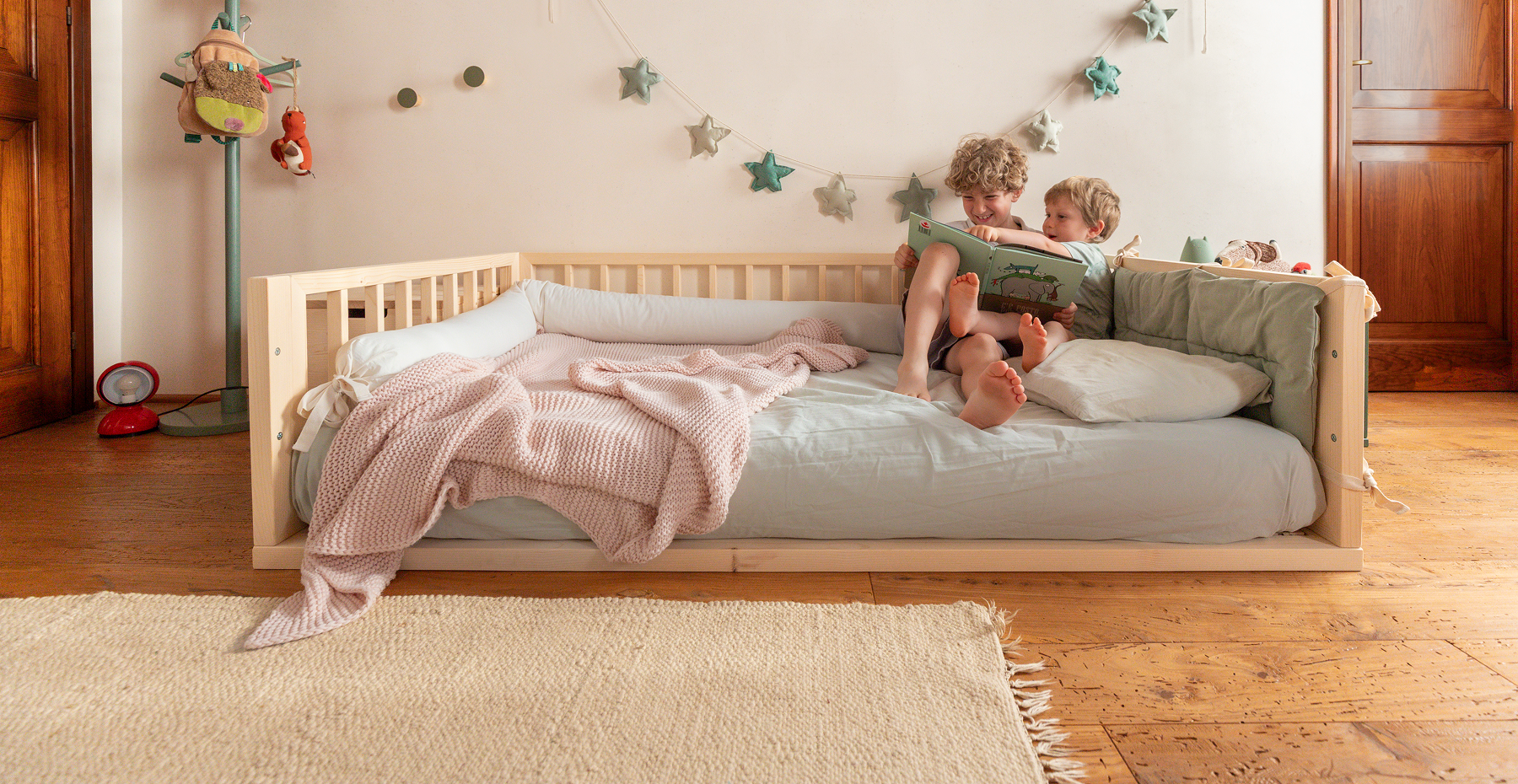The durability of a Montessori evolutive bed
03 / 09 / 2025
Paola di Ettomio

The Montessori bed isn’t just a piece of furniture—it’s a little partner in your child’s journey of growth, discovery, and independence.
As parents, we naturally start wondering: how long will this bed really last? When will we have to swap it for a “regular” bed?
And let’s be honest, how many times have we bought something for our kids, only to see it used for a few weeks before it becomes… well, a very expensive shelf? Even the crib—the one we carefully picked before the baby even arrived—often ends up barely touched.
Children have an amazing ability to surprise us, which is why, when we designed our Montessori bed, we focused first on durability, then on flexibility, and finally on quality that lasts.
A well-made Montessori bed can last a very long time, potentially forever if cared for properly!
The trick is adaptability: a bed that can change as your child grows.
What Determines the Durability of a Montessori Bed?
1. Quality of Materials
Durability starts with structure and finishes.
Ettomio beds are made of certified solid wood and finished with high-quality, child-safe paints. Every detail is designed to last.
2. Construction and Design
A well-designed bed is a long-term furnishing item.
The ability to remove barriers and protective railings allows the bed to evolve with the child — and adapt to a changing room layout too.
3. Care and Maintenance
Proper care extends the life of any piece of furniture.
At Ettomio, we support you even after purchase, helping you maintain your products and offering practical advice for everyday use.
We promote a gentle, respectful relationship with objects. Teaching children to take care of their things encourages responsibility, gratitude, and awareness — values that grow with them.
When to Start Using a Montessori Bed
There isn’t a fixed moment for introducing a floor bed, but it already offers great benefits when the child begins to move independently, typically between 8 and 18 months.
Thanks to its accessible and safe structure, the child can get in and out of bed freely, practicing independence day after day.
As months pass, children continue to appreciate:
easily accessing their bed
experimenting with new movements
running toward their cozy resting space
diving into pillows and blankets
This phase can last several years. We usually suggest observing the child and letting them guide the transition to a higher bed when they naturally ask for it.
There is also a developmental milestone that parents usually recognize well: children start sleeping differently.
They wake up less, stay covered, and clearly perceive the boundaries of the mattress.
This is a sign they are ready for a raised bed, since they no longer risk rolling off during the night.
This moment typically arrives between ages 4 and 6, and it’s the ideal time to add:
the piedini (raised feet)
or the cassettone (storage base), which in our collection can also become a second pull-out bed — perfect for the first sleepovers!
Quanto dura davvero un letto Montessoriano evolutivo?
Se progettato bene, curato e costruito con materiali di qualità, un letto Montessori può:
durare molti moltissimi anni,
adattarsi alle varie fasi della crescita,
restare bello e stabile anche nel lungo periodo,
diventare un vero e proprio elemento d’arredo duraturo.
...può insomma durare per sempre, trasformandosi nel letto definitivo del bambino
... in conclusione
Il letto Montessoriano non è un oggetto che “dura poco”: al contrario, se scelto con cura, è uno degli investimenti più intelligenti e sostenibili per accompagnare i bambini nella crescita.
Grazie alla sua natura evolutiva, può essere usato:
> dai primi mesi di autonomia,
> fino all’infanzia avanzata,
> adattandosi ai bisogni che cambiano nel tempo.
E soprattutto, offre ai bambini ciò di cui hanno più bisogno: autonomia, libertà, sicurezza e fiducia nelle proprie capacità.
Recommended products